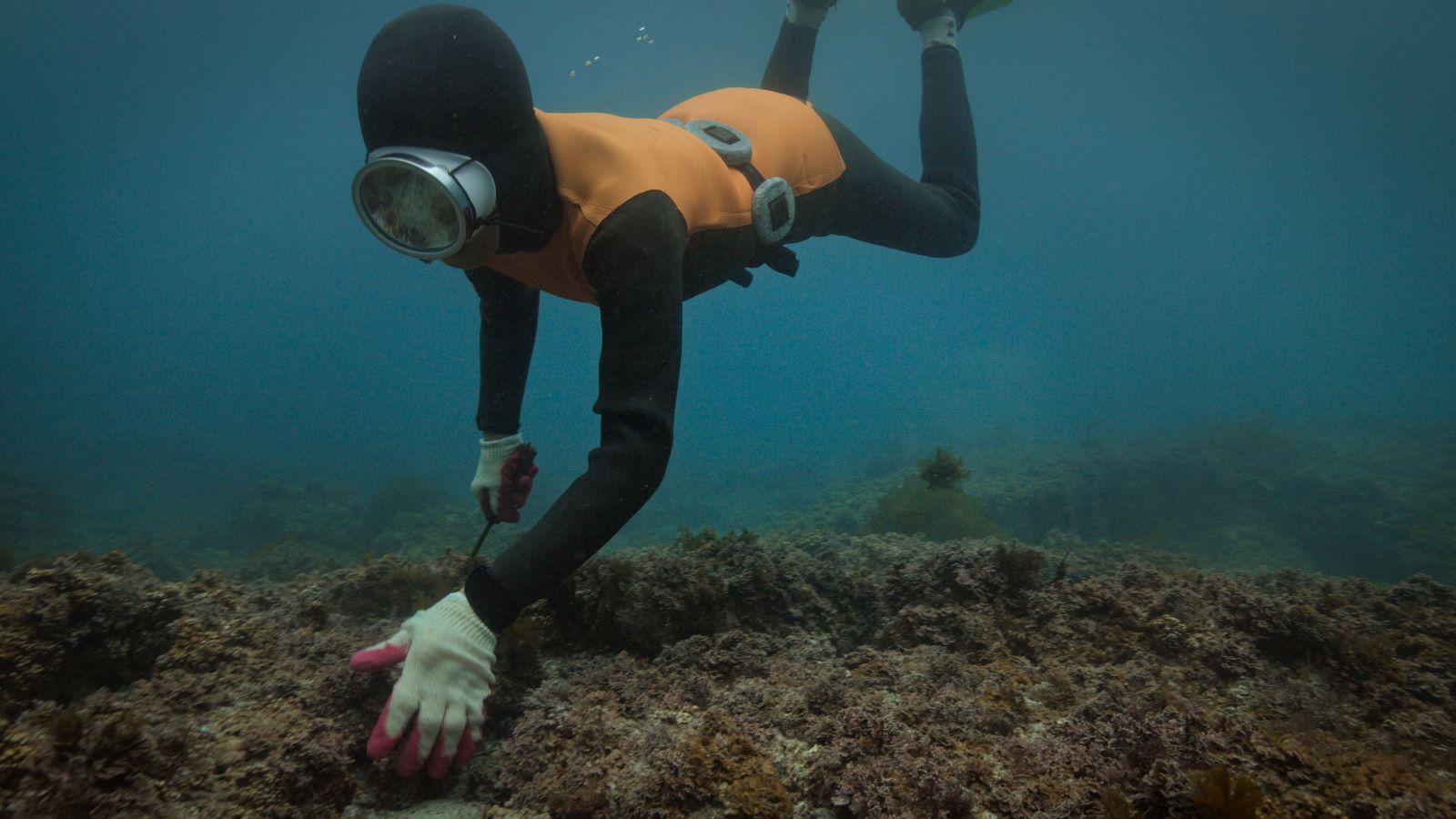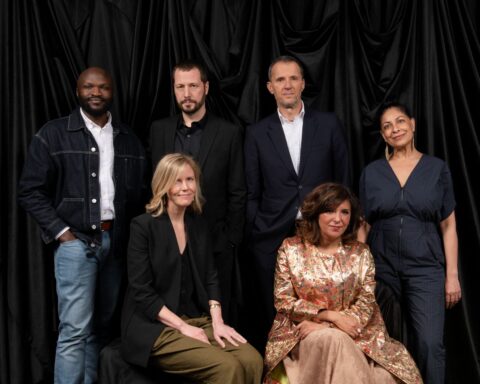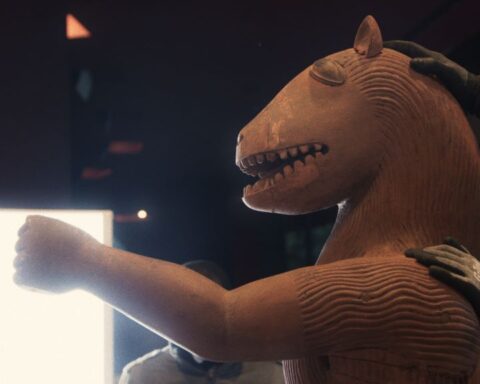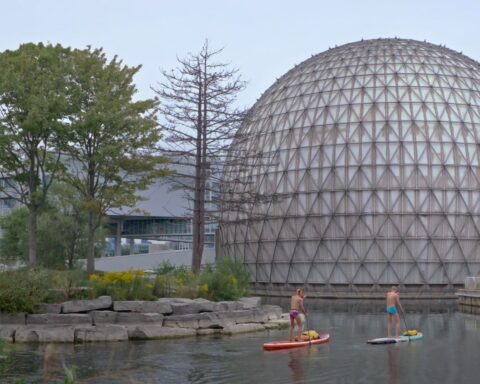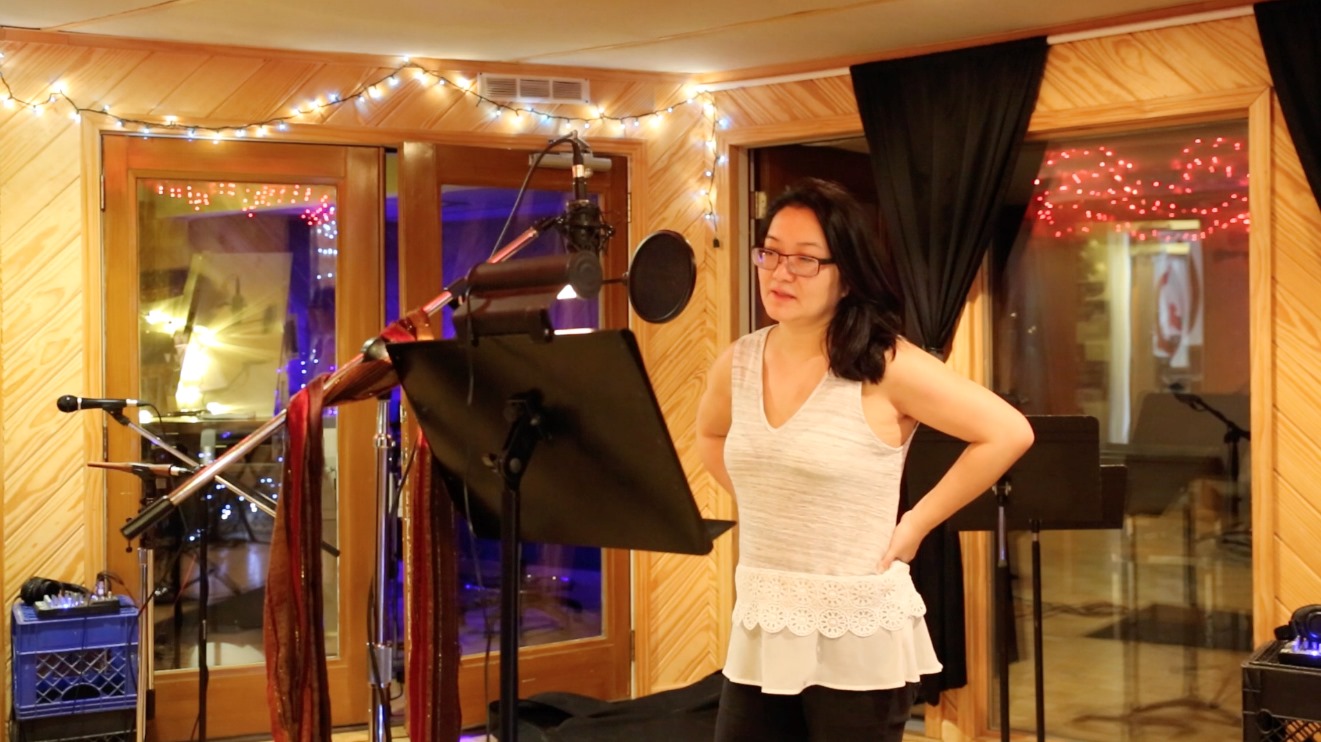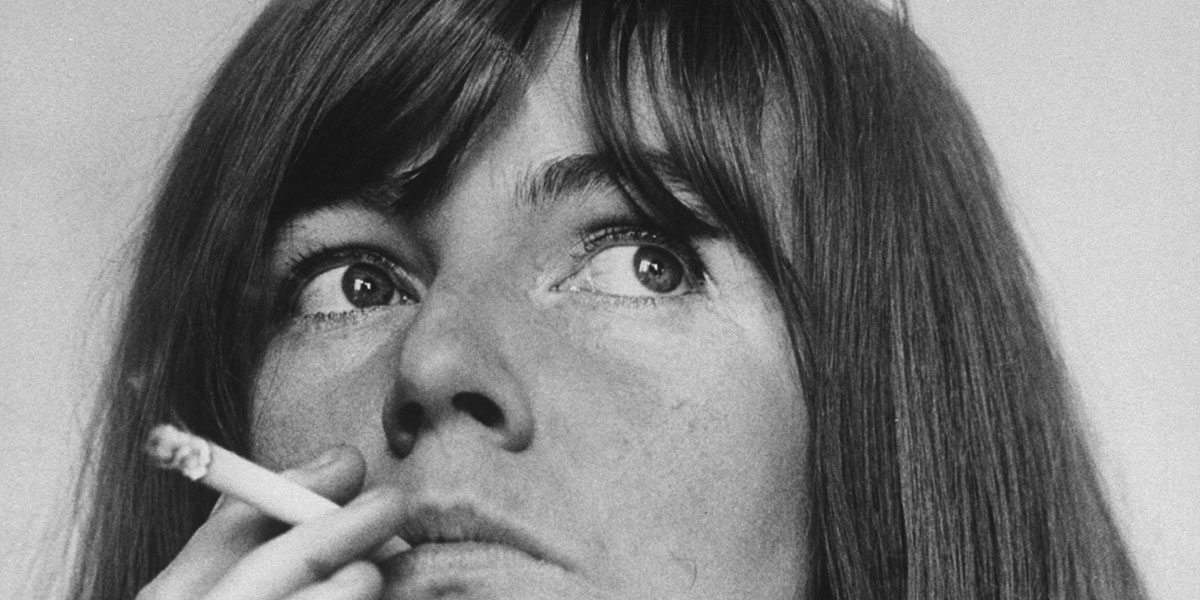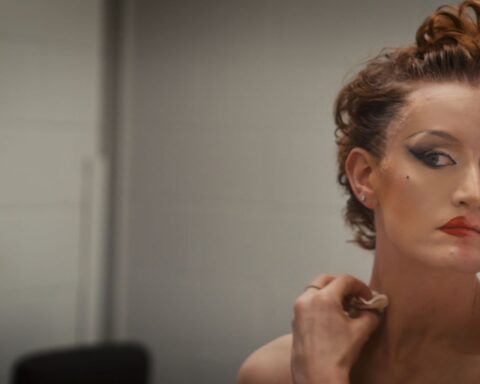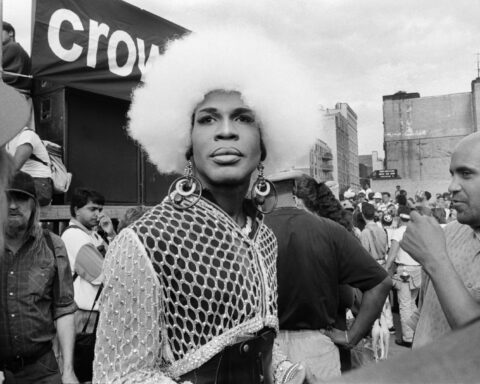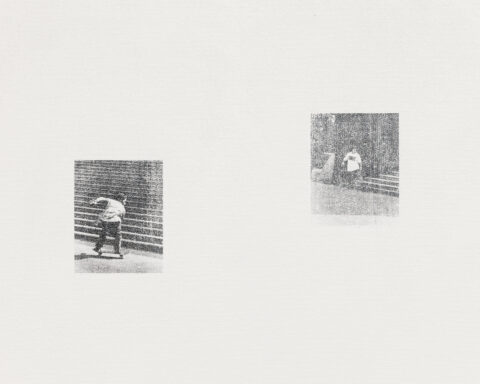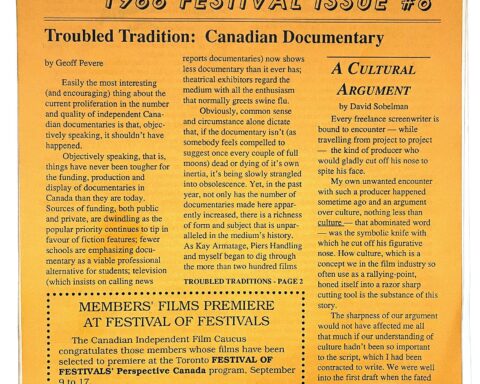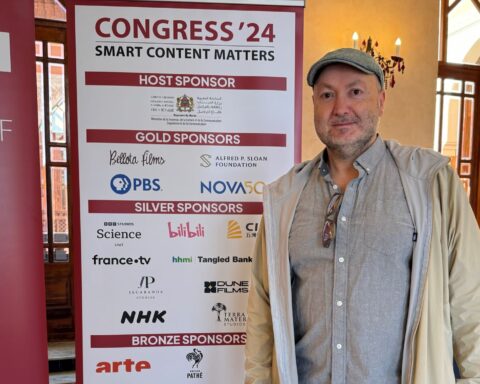Meet the haenyeo fisherwomen of Jeju Island. They dive to great depths off the coast the island found 300 kilometres south of South Korea. They hold their breath for several minutes, swimming without tanks while gathering crustaceans, molluscs, cephalopods, and other riches of the sea. These wise water-loving elders are guardians of the oceans and providers for their communities. But they’re a fading breed.
The Last of the Sea Women offers a joyous tribute to the haenyeo as they fight to preserve a way of life. The documentary directed by Sue Kim and produced by Kim, Malala Yousafzai, and Erika Kennair introduces audiences to several of the “aunties” who thrive underwater. The film’s lively cast includes Soon Deok Jang (72), In Sook Park (70), Im Saeng Ko (73), Joo Hwa Kang (63), and Geom Ok Lee (90) among the haenyeo of Jeju’s fishing community.
Striking underwater sequences highlight the techniques and skills of the sea women as they dive and harvest. Kim admits that she didn’t do the deep dives herself due to claustrophobia, but credits underwater cinematographer Justin Turkowski for getting those amazing shots. (On land, The Last of the Sea Women features cinematography by Eunsoo Chu and Canada’s Iris Ng.) But Kim says that having a cinematographer who was also a free diver illustrated the strength of the haenyeo, who consistently outmatched her athletic 30-year-old colleague. “He couldn’t believe that there was an 85-year-old grandma that was out breathing him,” laughs Kim, speaking with POV upon The Last of the Sea Women’s world premiere at the Toronto International Film Festival.
The director notes that the haenyeo could hold their breath for two to three minutes and that she’d be in awe watching footage on playback when Turkowski came up for air. “I remember feeling, especially seeing his perspective since he’s an underwater expert, that just the sheer skill and physicality of these women in their elder years was shocking. We don’t of course stay down there with them in one long shot for three minutes because that’s a really long shot, but you can see how agile and nimble they are underwater even no matter how old they are.”
Kim says she met with roughly 40 women across 12 villages while casting, but honed in on four communities thanks to the compelling stories the haenyeo brought. The director cites Soon Deok Jang as one haenyeo who immediately stood out when she becomes a national spokesperson at the United Nations. “She was such an ardent environmentalist and right from the beginning of my conversations with her, she was talking about what was happening in the ocean. She clearly had such a natural passion for telling that story,” says Kim. “Her community in general, they’re all very ardent and active environmentalists. They were always going to protests and talking about pesticides going into the water and what was happening with the marine life.”
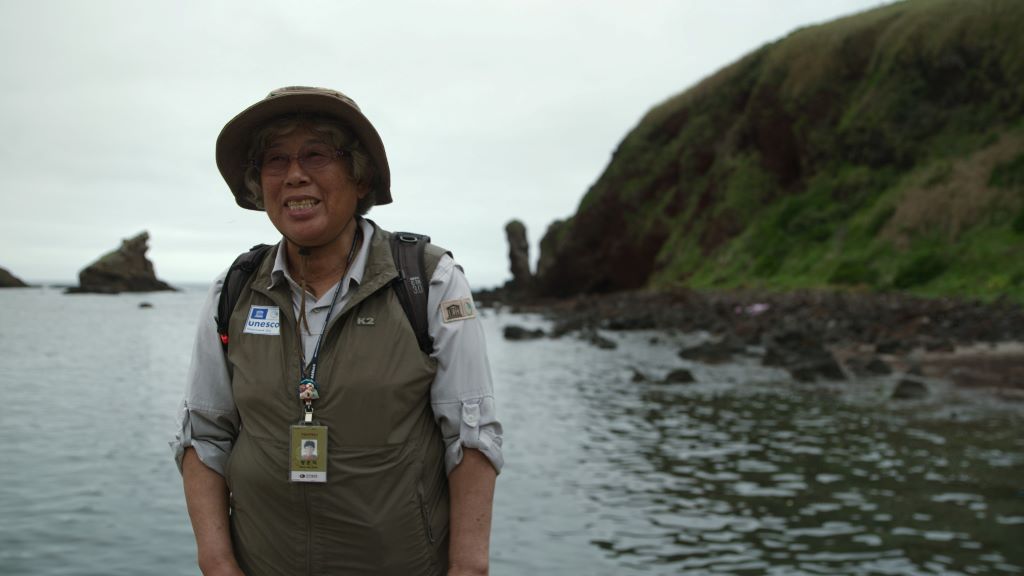
The Last of the Sea Women provides a stirring character-driven environmental story as Soon goes to speak at the UN. The cause for concern is serious as the Japanese government announces plans to dispose of contaminated water used to clean up nuclear waste from the Fukushima disaster. The controversial strategy will dump wastewater into the ocean over 30 years. Jeju Island will inevitably experience the effects of this campaign as waste follows the ocean’s natural currents. The haenyeo know the consequences to their health and livelihoods will be devastating. Their daily dives already observe evidence of climate change with the dwindling fish supplies and decline in seaweed even though Jeju Island’s haenyeo culture was inscribed on the UNESCO List of Intangible Cultural Heritage in 2016.
Other characters prove natural complements. On Geoji Island, Last of the Sea Women introduces Jeongmin Woo and Sohee Jin. The thirtysomething haenyeo share how they escaped the rat race and dove into jobs that offered respites from office work. They invigorate the haenyeo lifestyle and document evidence of climate change using YouTube videos and dance-fuelled TikToks.
Last of the Sea Women’s focus on these women and the advocacy that spans generations, moreover, makes the documentary a natural fit for activist Malala Yousafzai as she embarks on a new career as a producer. (The film is the first in a partnership between her Extracurricular Productions, AppleTV+, and U.S. indie distributor A24.) Besides her activism, Yousafzai brings a sense for the responsibility entailed in being in front of a camera, having shared her own life previously in Davis Guggenheim’s He Named Me Malala (2015), among other doc appearances.
“I remember the camera following me in different places from the U.N. to visiting Jordan to meet Syria refugees,” says Yousafzai on sharing her life in He Named Me Malala. She also shows a good fit for the job by quickly pivoting a question about herself to the subject at hand.
“I have been really interested in the stories of many more girls, many more women around the world, and I wanted to create a platform where I can also work together with directors and writers to reflect on the world as they see it,” she adds. “The Last of the Sea Women was one of the first ideas that I heard and I said yes straight away because of how relevant, important and inspiring the story was. I did not know about the haenyeo, and it’s one of the few matriarchal societies in the world.”
The film also boasts an ideal fit for Yousafzai given the theme of education, particularly knowledge passed between generations of women. “I see education beyond just maths and science textbooks,” says Yousafzai. “A school should be a place where a child can really learn a wide range of subjects, experience sports, music and different skills, and at the same time, it should really prepare a child or a girl for their future. I hope that this documentary helps us realize that our education system is not fully helping the young people to appreciate all of these opportunities that are out there for them and giving more value to some than others.”
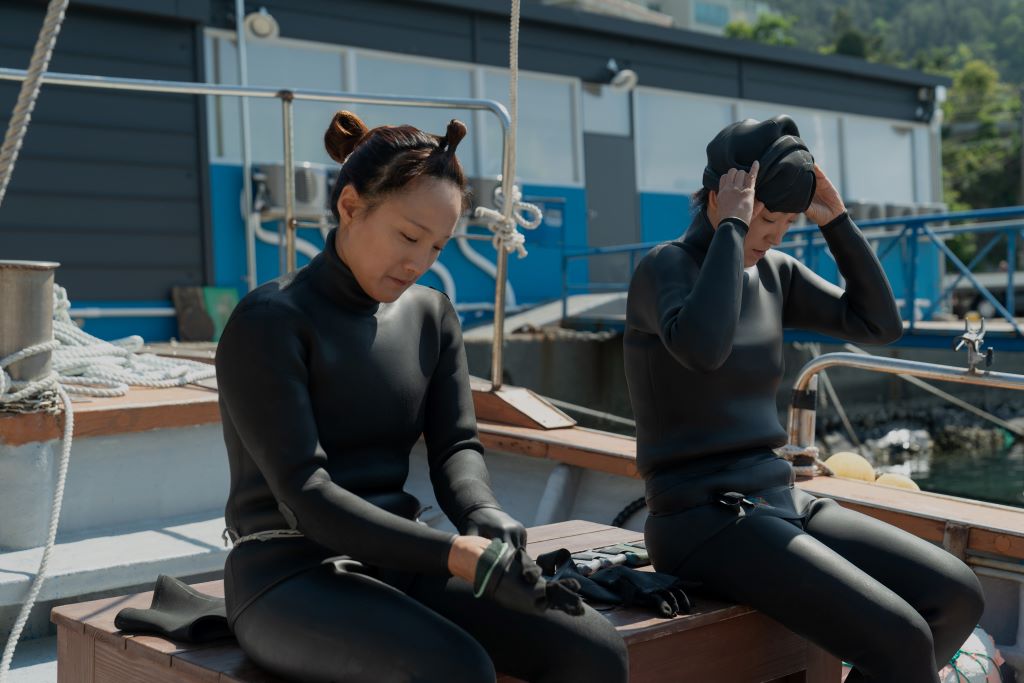
While the film does observe classes at the haenyeo school on Jeju Island, the elders speak about confronting the stigma associated with the job decades ago. “I think there is so much value to being a haenyeo and if a girl decides to join, she should be proud of it because, in the end, what education should do is help her to choose her own future,” adds Yousafzai. That sentiment echoes strongest in the scenes with Jeongmin and Sohee, who chose the job for the lifestyle, work/life balance, and holistic element it affords their families.
“That’s how I see education. I want girls to be able to complete their school to learn, to be exposed to different experiences so that they can choose a future for themselves,” says Yousafzai. “I see the exact same thing happening in this documentary as well where the young are deciding that this is the path that they want to take. They are proud of it and they consider it as part of being a successful life.”
Kim observes that education is a key theme of the film given the role of knowledge passed between generations. “Historically, before there were even haenyeo schools, the tradition and the culture itself was always passed down generationally from grandmother to mother to daughter. But now education took a bit of a turn and a twist in the film because the culture is dying out and we are losing that culture, so Jeju Island had to create schools specifically to help bolster that culture and to help preserve the skills of that trade,” says Kim. “The theme of education speaks to a larger theme in the film, which is what we have to benefit from the wisdom of our elders: what we can learn from them, the kind of inspiration that we can take from them.”
Particularly when The Last of the Sea Women brings the two generations of haenyeo together in their protests against the nuclear waste does the documentary find a touching spark by observing the impact that the elders have on the younger divers. Jeongmin and Sohee even turn away from the camera at one moment to hide their tears, a mix of inspiration from the elders, but also grief for what they risk losing.
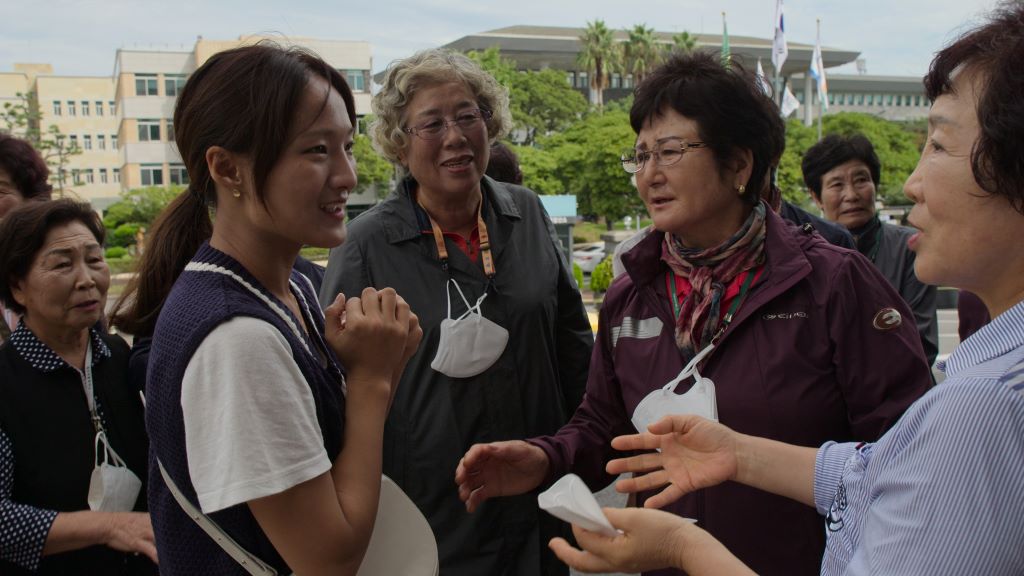
“These incredible women that are in their sixties, seventies and eighties, they’re so ready and willing to share their knowledge and their culture with the younger haenyeo that they meet. And the younger haenyeo, they’re so in admiration of their elders, but also they have so much to learn,” notes Kim. “That natural bond just happened. As soon as the older haenyeo met the younger haenyeo, there was this constant conspiring to work together and to help the younger haenyeo carry on this tradition. I thought that was a really beautiful thing to witness.”
Similarly, both Kim and Yousafzai credit elders in their lives who, like the haenyeo, have inspired them along the way. “I probably made this film in part as an homage to my grandmother who helped raise me,” says Kim. “She lived with me and my family when we were growing up and I shared a bedroom and a bed with her until I was 13 years old. So you can imagine how tight we were and she was, to me, the model of strength, resilience. She moved to a new country when she was 60 years old, and I think that’s incredibly brave. So much of the courage I see in the haenyeo is something that I recognized in my grandmother as well.”
“I talk a lot about my mom because she stopped going to school after grade six, and she never got back into her education for many, many years,” adds Yousafzai. “But when we moved to the U.K., she was facing challenges in communicating in English—even booking a doctor’s appointment or calling a cab, and she was just dependent on everybody else. Then she started taking English classes. So she has really found that moment where she does not rely on anyone else to do that. She can do everything herself now. She inspires me.”
As The Last of the Sea Women reaches audiences, Kim and Yousafzai hope that viewers will recognize more fish in the ocean, so to speak.
“When I look at the women activists from the past, from history who have helped us to have more rights and more equality today, and also the incredible girls I meet out there who are young and brave and courageous, they want to make a better future,” says Yousafzai. “They inspire me too.”




